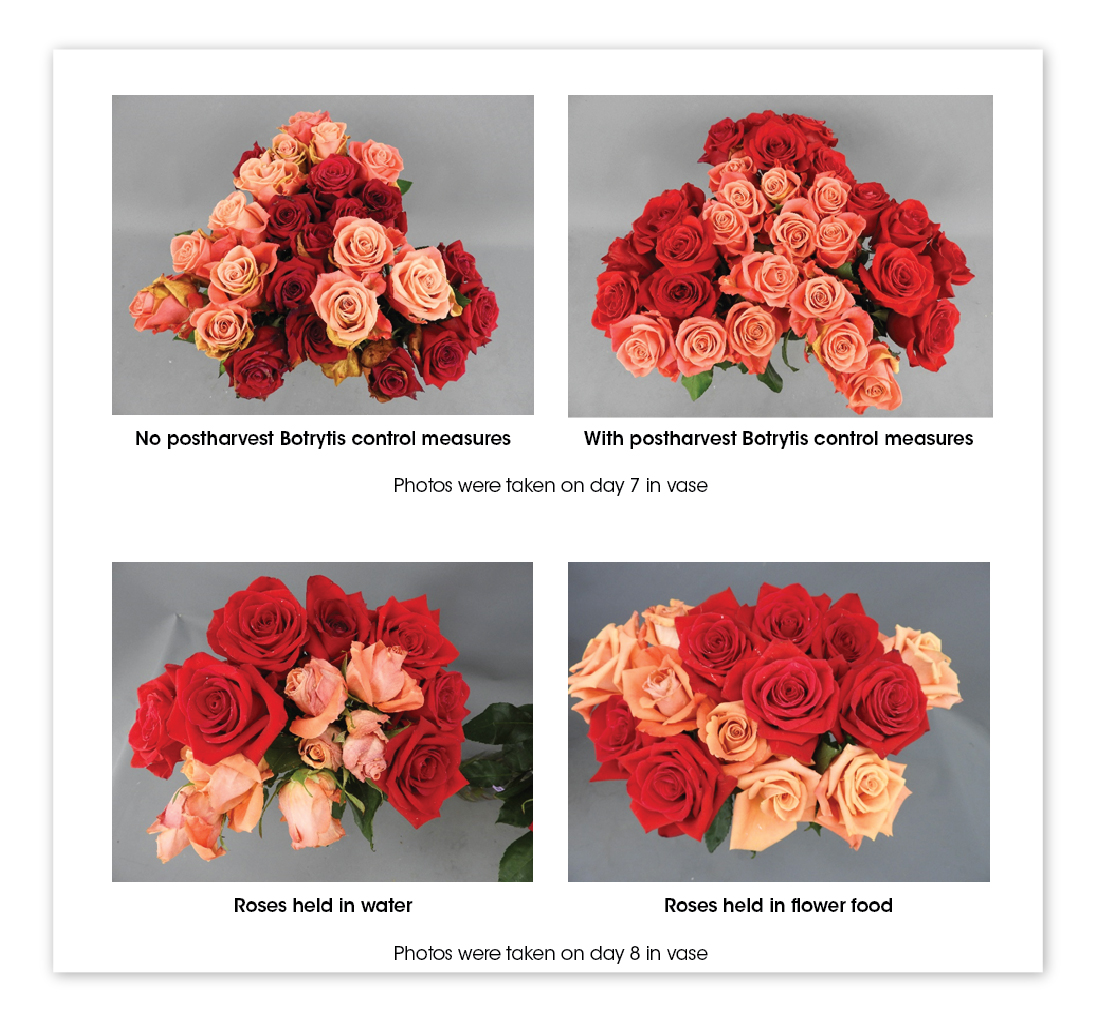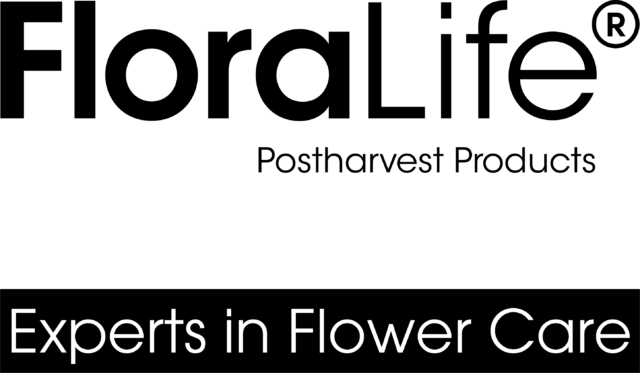Best Practices in the Rose’s Journey to Fresh – How to Deliver Best Quality Roses to your Customers
Research Update, powered by FloraLife
Anil Ranwala, Ph.D. – Manager, Postharvest R&D, FloraLife

Globally, the rose is the most popular crop, dominating the cut flower industry. They come in different colors, shapes and opening characteristics giving many choices to cut flower buyers. Preserving the quality that turns into best performance in a vase or in an arrangement is the key for consumer enjoyment and repeated purchase. In this research update, we discuss the main factors that affect the quality of cut roses, as well as the key postharvest practices that ensure maximized shelf life.
Variety (Genetic Aspects)
There are hundreds of commercial rose varieties grown today, and breeders are busy introducing many new ones. They all have different characteristics including color, shape, fragrance, flower opening pattern, petal count, and vase life. These characteristics are inherent to the variety. With all these available options, there is a rose for every occasion!
Growing Conditions
Scientists believe that a big part of the postharvest quality can be attributed to how the flower was grown prior to being harvested (preharvest). Starting with a good quality flower with high reserves and vigor gives a good head start to the postharvest journey. Key preharvest factors include fertilizer regime, plant density, available light, humidity, pest and disease management and irrigation.
Harvesting and Handling at Farm
Harvesting roses at the correct stage is very important. Harvesting stage depends on whether the flowers are going to be stored before shipping, the shipping and packaging methods, and consumer preference. Moving flowers out of the field and into a cooler environment as soon as possible will help maintain the quality.
Flower Conditioning for Transport & Storage
Harvested flowers usually receive several treatments to condition for storage or immediate shipping. These treatments should at least include a proper hydration product to restore the water balance, and a preventive anti-Botrytis postharvest treatment. Sanitation is a key aspect during this stage. All buckets, containers and tools should be routinely cleaned and sanitized to minimize contamination and proliferation of microbes which can cause blockage of water conducting elements inside the stem. Utilizing good quality water is also important for successful hydration, as well as preparing stems with clean cut ends.
Packaging
Packaging can differ depending on whether the roses are shipped as bunches or bouquets, as well as the shipping method (air vs. sea container). Bouquets will usually have a sleeve. Bunches will have a wrap to protect the blooms. The shipping boxes are designed for either air or sea shipment. If you are shipping flowers in a sea container, specific boxes designed for that purpose should be used. These boxes have holes on 4 sides for better air exchange. Regardless of the method of shipment or type of packaging, it is important to not overpack the boxes. Overpacking is the most common reason for mechanical damage done to flowers which not only makes the flowers unusable but also encourages the spread of diseases such as Botrytis.
Temperature Management
One of the most important factors of preserving the quality of cut roses is temperature management. They should be stored, shipped and handled at low temperature to preserve the vase life and quality. The recommended optimum temperatures range between 0.5 to 3 C (32.9 – 37.4 F). For air shipment and holding, typically 2 to 3 C (35.6 – 37.4 F) is practical due to the availability of coolers and the shipment duration. However, if the flowers are stored for longer than a few days or shipped in sea container, you should try to achieve the ideal 0.5 C (32.9 F) storage temperature. Monitoring and recording cooler temperature is advised to make sure flowers are kept in optimum conditions.
Preventing Ethylene Damage
There are many published academic studies showing ethylene damage to cut roses and preventive effects of anti-ethylene treatments such as 1-methylcyclopropene (1-MCP). The symptoms of ethylene damage vary depending on the variety. Typical symptoms include petal shattering, abnormal opening, bent neck, and petal discoloration. Anti-ethylene treatment is essential if flowers are exposed to high ethylene environments during shipping, holding, or are subject to stress. If the flowers are stored for a long duration or shipped by sea, anti-ethylene treatments become even more important.
Holding and Store Display Phases
Water and nutrient balance are key aspects during these phases. Flowers may arrive dehydrated and wilted after dry shipment. Proper hydration and holding treatment in a cooler will revive these flowers and the continuous supply of nutrients by these treatments will ensure that flowers maintain essential functions during these phases and not loose potential vase life for the end consumer. There are many commercial flower food products specifically formulated for this purpose. As with any other stage, proper sanitation, clean treatment solutions and disease management will keep the flowers in great condition.
Consumer Enjoyment
Many studies show that holding cut roses in flower food solution as opposed to plain water helps with proper opening, color development and ultimately with vase life of flowers. Again, the water and nutrient balance provided by the flower food is the beneficial effect.
Summary
The quality of cut roses and the consumer enjoyment are dependent on genetics of the variety, how flowers are grown and postharvest care and handling. Proper postharvest care includes proper hydration, sanitation, good packaging, temperature management, disease management, ethylene management and proper use of flower food. With these proper care practices, you can guarantee long lasting and beautiful roses to your customers.

To learn about best practices from the experts in flower care or to inquire about products and availability in your region, visit www.floralife.com or contact your local FloraLife representative.
